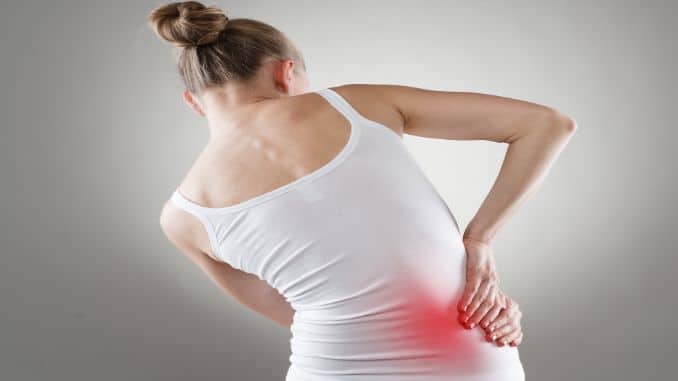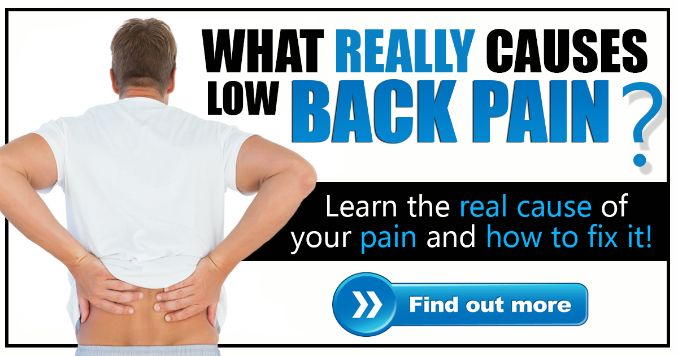Many people struggle with tight hips and lower back pain, especially if they sit for long periods or lead a sedentary lifestyle. These issues often overlap, creating discomfort in both areas and making it difficult to tell which one is the real source of the problem. Doctors even use the term “hip-spine syndrome” because hip pain [1] and back pain so often appear together.
Whether the root cause is tight hip flexors, poor posture, or structural imbalances in the hip joints and spine, the good news is that specific stretches and strengthening exercises can help relieve tightness, improve mobility, and reduce pain.
Below, you’ll find step-by-step instructions for the best exercises to release your hip flexor muscles, strengthen your core muscles, and address muscle imbalances that contribute to anterior pelvic tilt, a tipped pelvis, or lower back pain [2].
1. Rotate Legs In and Out
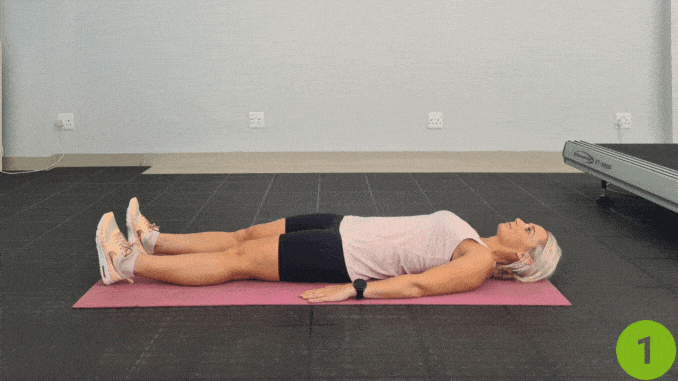
- Lie on your back on the floor.
- Keep your head, shoulders, hips, and legs in good alignment.
- Place your hands comfortably at your sides.
- Rotate your legs outward, then back inward.
- Focus on the movement coming from your thighs and hip joints.
- Perform 1 set of 5 repetitions on each side.
2. Spinal Twist
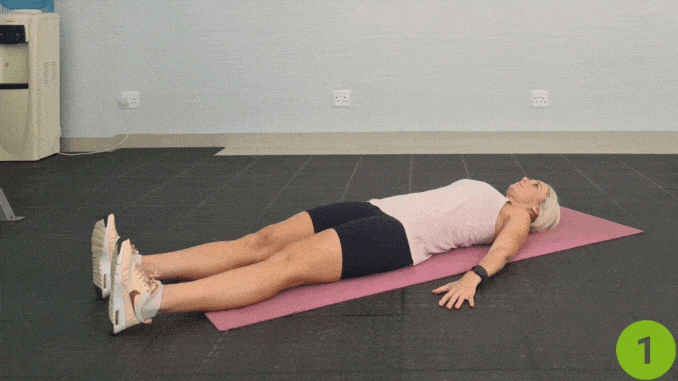
- Lie on your back with head, shoulders, hips, and legs aligned.
- Place your hands at your sides and bend one knee upward.
- Engage your core and twist through your low back and pelvis.
- Bring the bent knee across your opposite leg.
- Hold 20 seconds, then return to the start.
- Repeat on the other side, 2 reps per side.
Modifications:
Halfway Twist
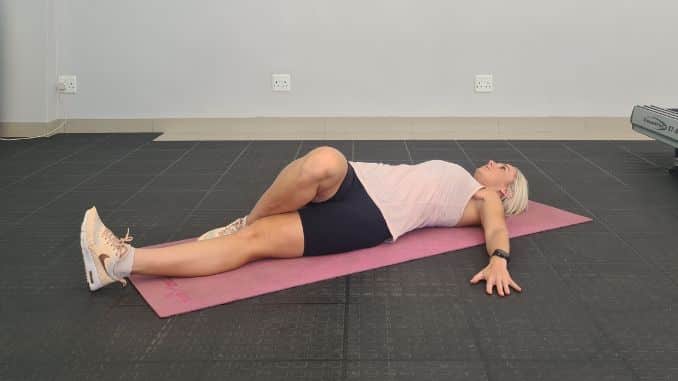
- Lie on your back with head, shoulders, hips, and legs aligned.
- Place hands at your sides and bend one knee, foot flat.
- Engage your core and twist through your low back and pelvis.
- Bring the bent knee halfway across your body.
- Hold 20 seconds, then return to start.
- Repeat on the other side, 2 reps per side.
Knees Side-to-Side:
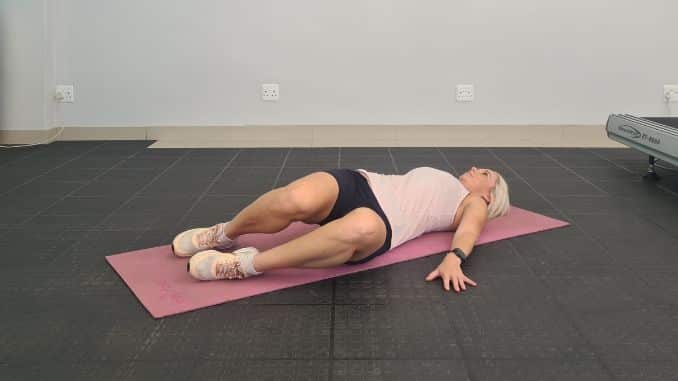
- Lie on your back with knees bent and feet flat.
- Relax your upper body, hands at your sides.
- Engage your core and slowly twist through your low back and pelvis.
- Let both knees fall gently to one side.
- Hold 20 seconds, then return to start.
- Repeat on the other side, 2 reps per side.
3. Standing Hip Flexor Stretch
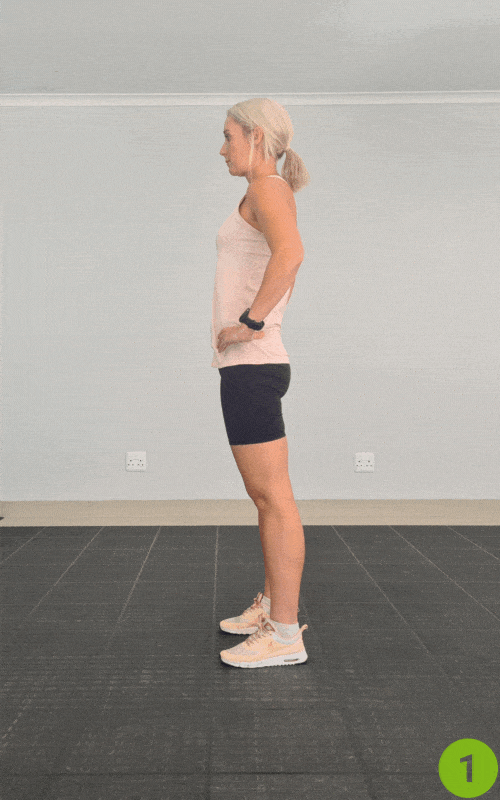
- Stand tall with hands on hips, body aligned.
- Step one foot forward, toes straight.
- Bend the front knee, straighten the back leg.
- Engage your core and shift hips forward to stretch hip flexors.
- Hold 20 seconds, then switch sides.
- Do 2 reps per side.
4. Hamstring Walkouts
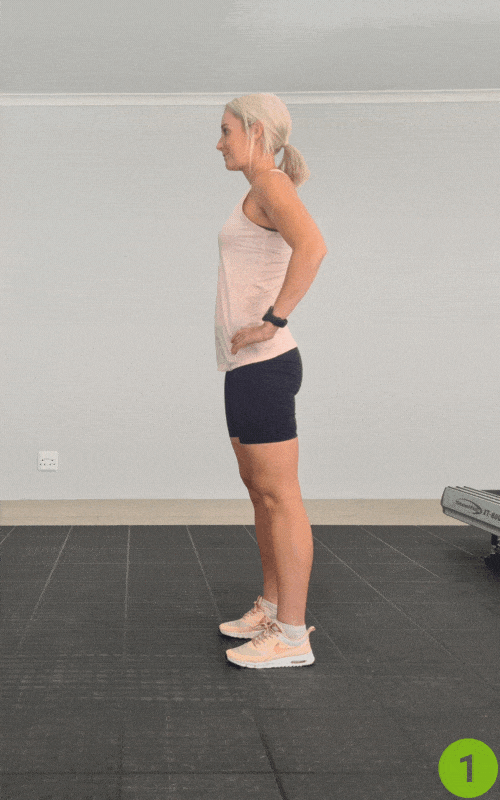
- Stand with feet shoulder-width apart.
- Bend forward from the hips, knees slightly bent, and bring your hands to the floor.
- Walk your hands forward until you reach a push-up position.
- Walk your hands back toward your feet and return to standing.
- Repeat 2 times.
Modifications:
Static Hamstring Stretch:

- Stand with feet shoulder-width apart.
- Bend knees slightly and hinge forward at the hips.
- Lower your upper body, reaching hands toward the floor.
- Hold a few seconds, keeping a neutral spine.
- Slowly rise back up.
- Do 1 set of 2 reps.
Straight-Leg Walkout:
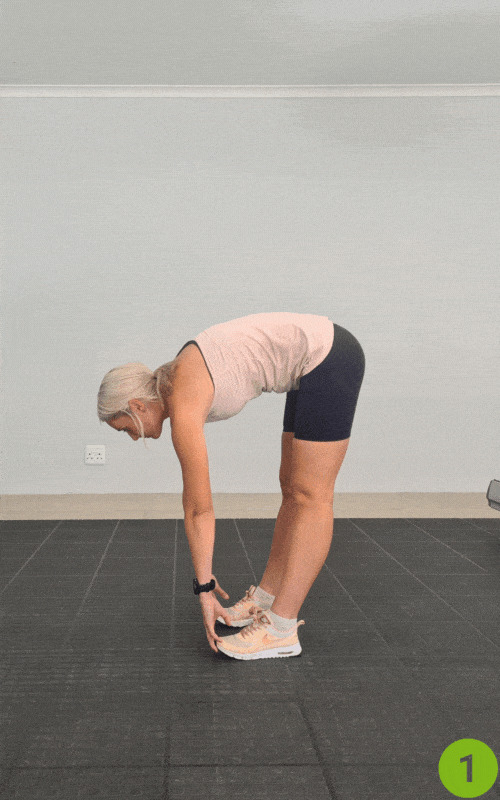
- Stand with feet shoulder-width apart.
- Hinge forward at the hips, legs straight, and lower your upper body.
- Place hands on the floor and walk them forward into a plank.
- Keep head, shoulders, hips, and toes aligned.
- Walk hands back toward your feet and return to standing.
- Do 1 set of 2 reps.
5. Foot-to-Hand Stretch

- Stand upright with your head, shoulders, hips, and legs aligned.
- Engage your core muscles.
- Kick one leg upward toward the ceiling.
- Reach across with your opposite hand to touch your toes.
- Return to the starting position.
- Repeat on the opposite side.
- Perform 1 set of 5 repetitions on each side.
Modification:
Standing Hamstring Stretch:

- Stand tall with head, shoulders, hips, and legs aligned.
- Extend one leg straight out in front, toes up.
- Hinge forward at the hips and reach toward your toes with a straight back.
- Return to start and switch legs.
- Do 1 set of 5 reps per side.
6. Forward Fold
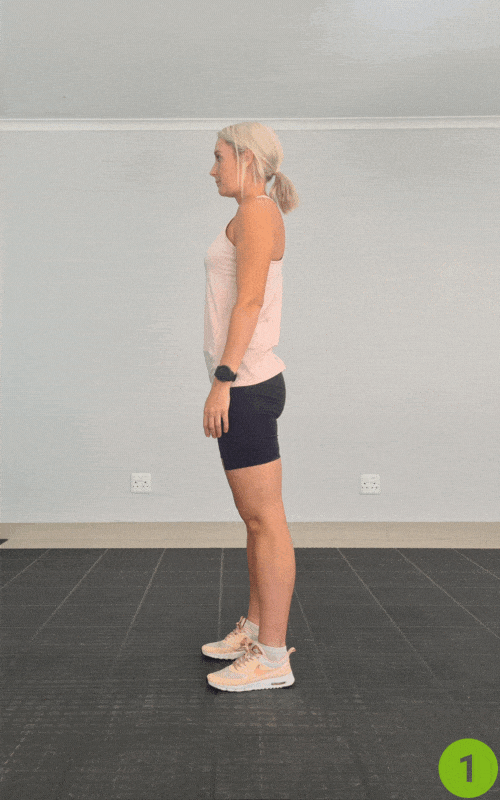
- Stand with feet slightly wider than shoulder-width apart.
- Keep body aligned and bend knees slightly.
- Hinge at the hips, lowering your upper body and head toward the floor.
- Reach hands down as far as comfortable.
- Hold 10 seconds, then return to standing.
- Do 1 set of 2 reps, holding each for 10 seconds.
Additional Supportive Hip Flexor Strengthening Exercises
In addition to stretching, strengthening is vital to correct muscle imbalances:
- Butterfly Pose: Sit upright, press the soles of the feet together, and gently lower the knees outward.
- Bridge Pose: Lie on your back with knees bent and feet flat. Slowly lift hips up, squeeze glutes, hold, then gently lower.
- Standing Knee Hold: Balance on one leg while pulling the opposite knee toward the chest. Hold for 30 seconds per side.
These are great for improving posture, stabilizing the pelvis, and preventing increased risk of lower back pain.
According to Dr. Kelly Starrett, DPT (Doctor of Physical Therapy), co-founder of The Ready State and author of Becoming a Supple Leopard, notes:
“One of the most common reasons people suffer from tight hips and lower back pain is prolonged sitting. Sitting for long periods puts the hip flexors in a shortened position, which creates stiffness and muscle imbalances. Over time, this can pull the pelvis into an anterior tilt, increasing stress on the lower back. The solution isn’t just stretching—people need a combination of specific stretches, strengthening exercises, and regular physical activity throughout the day to restore balance and keep the hip joints healthy.”
Why Hips and Back Are So Connected?
Tight hip flexors pull the pelvis forward into anterior pelvic tilt, straining the lower back.
Prolonged sitting [3] shortens the hip flexor muscles, reduces blood flow, and weakens the glutes.
Structural imbalances in the hips can lead to pain traveling into the spine or even down the legs.
Nerve-related pain, like sciatica, can mimic hip pain but often radiates below the knee.
Because of these overlaps, many people struggle to know whether they’re experiencing hip pain or back pain. Working with a physical therapist can help identify the underlying cause and design a safe plan, often alongside a thorough physical examination and medical history, as well as diagnostic procedures such as X-rays, MRI, or CT scans that can help pinpoint the root source of pain.
Consistent stretching and strengthening exercises can significantly reduce tight hips and lower back pain, especially when practiced daily.
Conclusion
If you’re experiencing tight hips and lower back pain, don’t ignore it. These specific stretches and strengthening exercises are simple but powerful ways to relieve tightness, restore neutral spine posture, and improve mobility in your hip joints.
Commit to daily movement—even just 10 minutes on a yoga mat—to counteract the effects of long periods of sitting. Over time, you’ll notice reduced stiffness, improved posture, and fewer flare-ups of pain.
If pain persists, consult a physical therapist to ensure there isn’t a more serious health condition or injury behind your discomfort.
Struggling with tight hips or lower back pain? Check out Low Back Pain Solved for simple, effective solutions that actually work.
FAQ’s
How do I know if my pain is from tight hips or my lower back?
If the discomfort is mainly in the groin or the front of the hip, it’s often a hip flexor issue. If pain radiates across the spine, buttocks, or down the leg, it may be related to the lower back or nerves. A physical therapist can help pinpoint the underlying cause.
Can tight hip flexors really cause lower back pain?
Yes. Tight hip flexors can tilt the pelvis forward and put extra strain on the spine, leading to persistent back pain. That’s why hip flexor stretches and strengthening glutes are so important.
How long does it take to relieve hip tightness with exercise?
With daily practice of specific stretches and mobility work, most people notice improvements in 2–4 weeks. Consistency is key to improving blood flow, mobility, and reducing stiffness from a sedentary lifestyle.
What’s the best exercise to start with if my hips feel very tight?
The kneeling hip flexor stretch is one of the best starting points because it directly targets tight hip flexors and relieves pressure on the lower back. Holding the stretch for 20–30 seconds per side daily can help.
When should I see a doctor or physical therapist?
If your hip pain or back pain persists longer than a few weeks, worsens during physical activity, or you feel pain radiating below the knee into the ankle or foot, consult a physical therapist or doctor to rule out structural imbalances or nerve issues.

